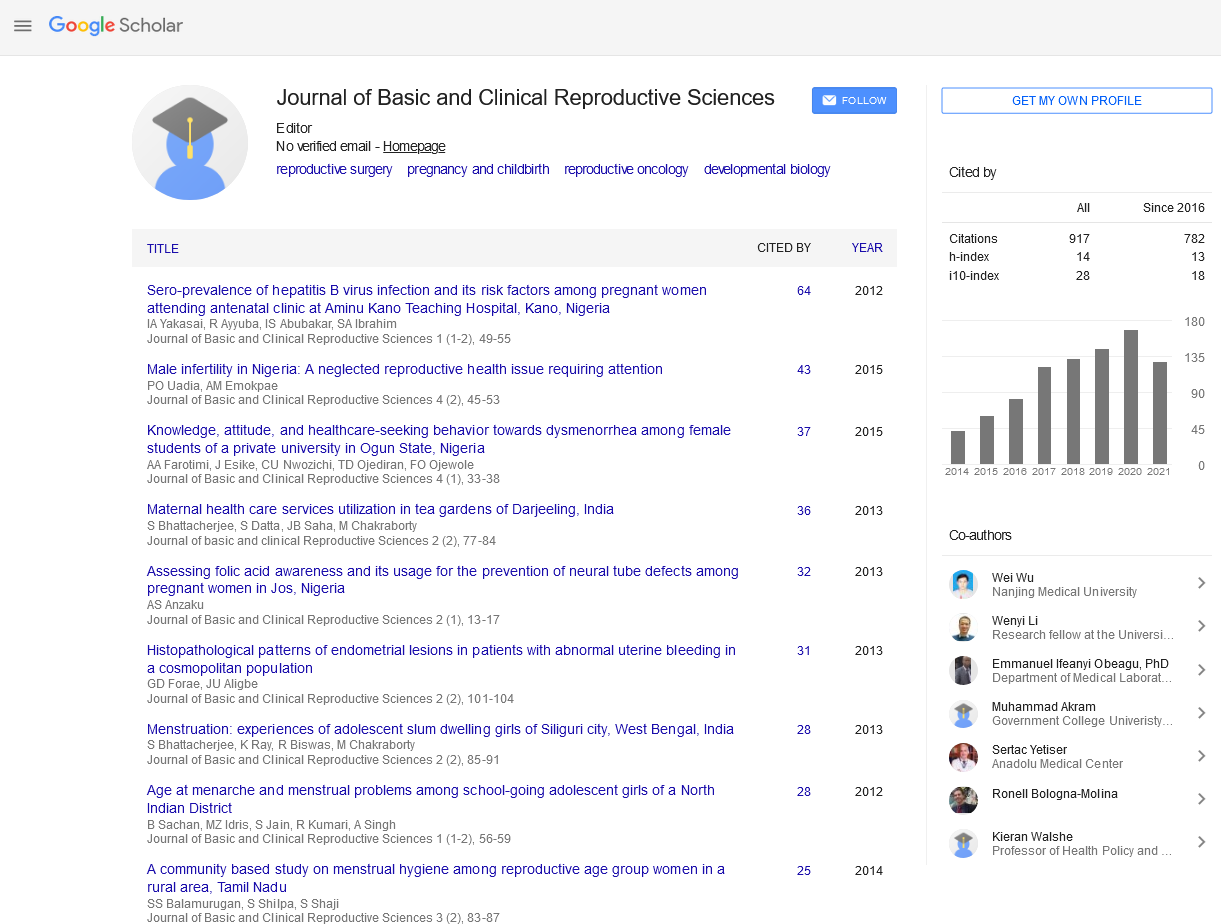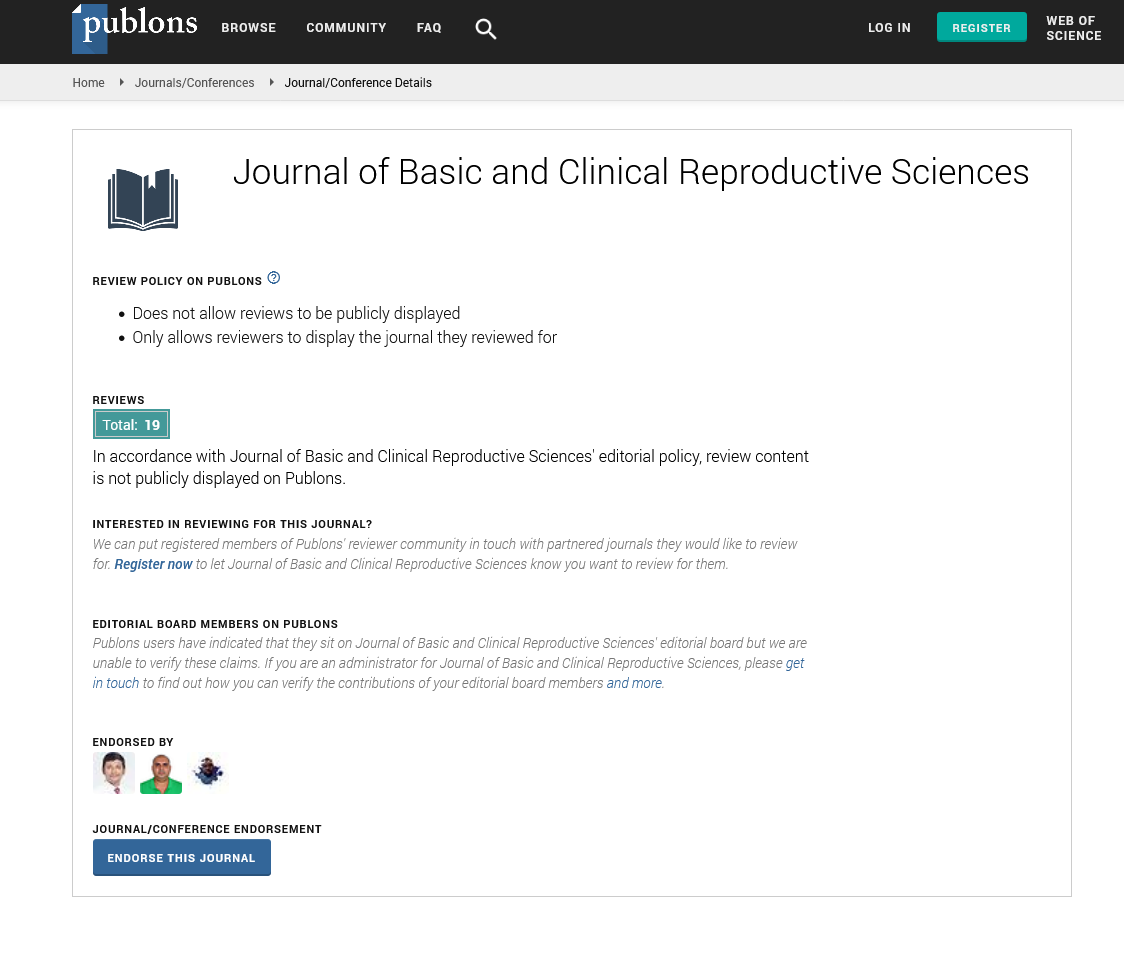Perspective - Journal of Basic and Clinical Reproductive Sciences (2023) Volume 12, Issue 4
Gynecology: Nurturing Female Health from Adolescence to Senescence
Received: 31-Jul-2023, Manuscript No. JBCRS-23-114372; Editor assigned: 02-Aug-2023, Pre QC No. JBCRS-23-114372 (PQ); Reviewed: 16-Aug-2023 QC No. JBCRS-23-114372; Revised: 23-Aug-2023, Manuscript No. JBCRS-23-114372 (R); Published: 30-Aug-2023
This open-access article is distributed under the terms of the Creative Commons Attribution Non-Commercial License (CC BY-NC) (http://creativecommons.org/licenses/by-nc/4.0/), which permits reuse, distribution and reproduction of the article, provided that the original work is properly cited and the reuse is restricted to noncommercial purposes. For commercial reuse, contact reprints@pulsus.com
Description
Gynecology, the medical specialty focused on the female reproductive system, has seen remarkable advancements over the years. Over the years, it has undergone significant changes, evolving from a primarily surgical field to one that encompasses a wide range of medical, surgical, and preventive healthcare services. Gynecology is a dynamic field that faces various challenges in meeting the diverse healthcare needs of women. While significant progress has been made in this field, various challenges persist, impacting women’s access to quality healthcare and their overall well-being. The history of gynecology dates back to ancient civilizations, with early practices rooted in a blend of medicine and mythology. However, modern gynecology took shape in the 19th century with the pioneering work of physicians like J. Marion Sims and James Young Simpson. While these early years had their share of controversies and ethical concerns, they laid the groundwork for the development of gynecology as a specialized medical field. Improved diagnostic tools have enabled early detection and timely treatment of gynecological conditions, leading to better outcomes. Minimally invasive and robotic surgeries have reduced surgical risks and recovery times, allowing women to return to their daily lives more quickly. Pap smears, HPV vaccination, and advanced cancer treatments have significantly reduced the incidence and mortality rates of gynecological cancers. Fertility treatments have offered hope and solutions to women and couples struggling with infertility. Improved menopausal management has enhanced the quality of life for women experiencing menopausal symptoms.Gynecology has evolved to provide holistic care that considers not only physical health but also emotional, psychological, and social well-being. Disparities in access to care, healthcare outcomes, and treatment options persist, disproportionately affecting marginalized communities, including women of colour, low-income women, and rural populations. Gynecological conditions such as Poly Cystic Ovary Syndrome (PCOS), endometriosis, and infertility continue to present challenges in diagnosis and treatment. Many women face difficulties in accessing appropriate care and support. Pelvic health issues, including pelvic organ prolapse and urinary incontinence, are common but often underreported and undertreated. The integration of mental healthcare with gynecological services is essential. Period-related disorders, such as heavy menstrual bleeding and menstrual pain, affect many women but may not receive adequate attention in clinical settings.
Advancements
Laparoscopy and hysteroscopy have revolutionized gynecological surgery, allowing for less invasive procedures with smaller incisions, reduced pain, and quicker recovery times. The introduction of robotic-assisted surgery systems has further enhanced the precision and dexterity of gynecological procedures, such as hysterectomy and myomectomy. The development of the Pap smear for cervical cancer screening and the introduction of vaccines against Human Papilloma Virus (HPV) have significantly reduced the incidence of cervical cancer. Modern imaging techniques like ultrasound, MRI, and CT scans have improved the diagnosis and evaluation of gynecological conditions, aiding in treatment planning. Assisted Reproductive Technologies (ART), including In Vitro Fertilization (IVF), have provided new options for women facing infertility challenges. Hormone Replacement Therapy (HRT) and non-hormonal alternatives have made menopausal management more tailored to individual needs and preferences.
Future directions
Addressing healthcare disparities in gynecology requires a concerted effort to eliminate barriers to access, improve cultural competence, and expand outreach to underserved communities. Advances in genomics and precision medicine may lead to more tailored treatments for gynecological conditions, improving efficacy and reducing side effects. Gynecologists are increasingly adopting a patient-centered approach, involving women in healthcare decisions and prioritizing their preferences and values. Telemedicine can enhance access to gynecological care, particularly for women in remote or underserved areas. Comprehensive gynecological care should consider the physical, emotional, and social aspects of women’s health. Integration of mental health services and lifestyle support can improve overall well-being. Raising awareness about gynaecological conditions, menstrual health, and pelvic health is essential to reduce stigma and promote early intervention and treatment-seeking behaviour.
Conclusion
The field of gynecology has made remarkable strides in improving women’s health and overall well-being. Advances in diagnostic tools, surgical techniques, fertility treatments, and preventive care have expanded the scope of gynecology beyond reproductive health to encompass a holistic approach to women's healthcare. As the field continues to evolve, it holds the promise of further breakthroughs in personalized medicine and care, ensuring better health outcomes for women of all ages.


